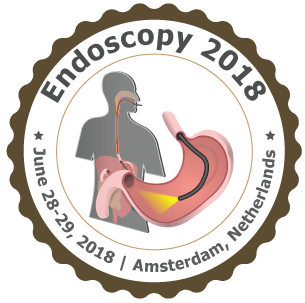12th International Conference on Abdominal Imaging and Endoscopy
Amsterdam, Netherlands

Emad Hamdy Gad
National Liver Institute, Menoufiya University Egypt
Title: Outcome of Surgical management of laparoscopic cholecystectomy (LC)- related major bile duct injuries.
Biography
Biography: Emad Hamdy Gad
Abstract
Objectives: Laparoscopic cholecystectomy (LC) - associated bile duct injury (BDI) is a clinical problem with poor outcome. The study aimed to analyze the outcome of surgical management of these injuries. Patients and methods: We retrospectively analyzed 69 patients underwent surgical management of LC related major BDIs (MBDIs), in the period from mid 2013 to mid 2018. Results: Regarding injury type; the Leaking, Obstructing, leaking + obstructing, leaking + vascular, and obstructing +vascular injuries were 43.5%, 27.5%, 18.8%, 2.9%, and 7.2% respectively. However, the Strasberg classification of injury was as follow: E1=25, E2=32, E3=8, and E4=4. The definitive procedures were as follow: End to end biliary anastomosis with stent, hepaticojejunostomy (HJ) with or without stenting, and RT hepatectomy plus biliary reconstruction with stenting in 4.3%, 87%, and 8.7% of patients respectively. According to time of definitive procedure from injury; the immediate (before 72 h), intermediate (between 72 h and1.5months), and late (after1.5 months) management were 13 %, 14.5 %, and 72.5 % respectively. The hospital and 1month (early) morbidity after definitive treatment was 21.7 %, while, late biliary morbidity was 17.4 % and the overall mortality was 2.9%, on the other hand, late biliary morbidity free survival was 79.7%. On univariate analysis, the following factors were significant predictors of early morbidity; Sepsis at referral, higher Strasberg grade, associated vascular injury, RT hepatectomy with biliary reconstruction as a definitive procedure, intra-operative bleeding with blood transfusion, liver cirrhosis and longer operative times and hospital stays. However, the following factors were significantly associated with late biliary morbidity: Sepsis at referral, end to end anastomosis with stenting, Reconstruction without stenting, liver cirrhosis, operative bleeding and early morbidity. Conclusion: Sepsis at referral, liver cirrhosis and operative bleeding were significantly associated with both early and late morbidities after definitive management of LC related MBDIs, so it is crucial to avoid these catastrophes when doing those major procedures.

